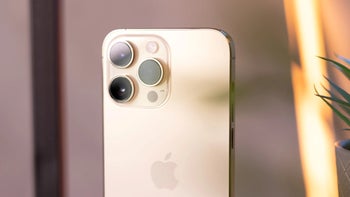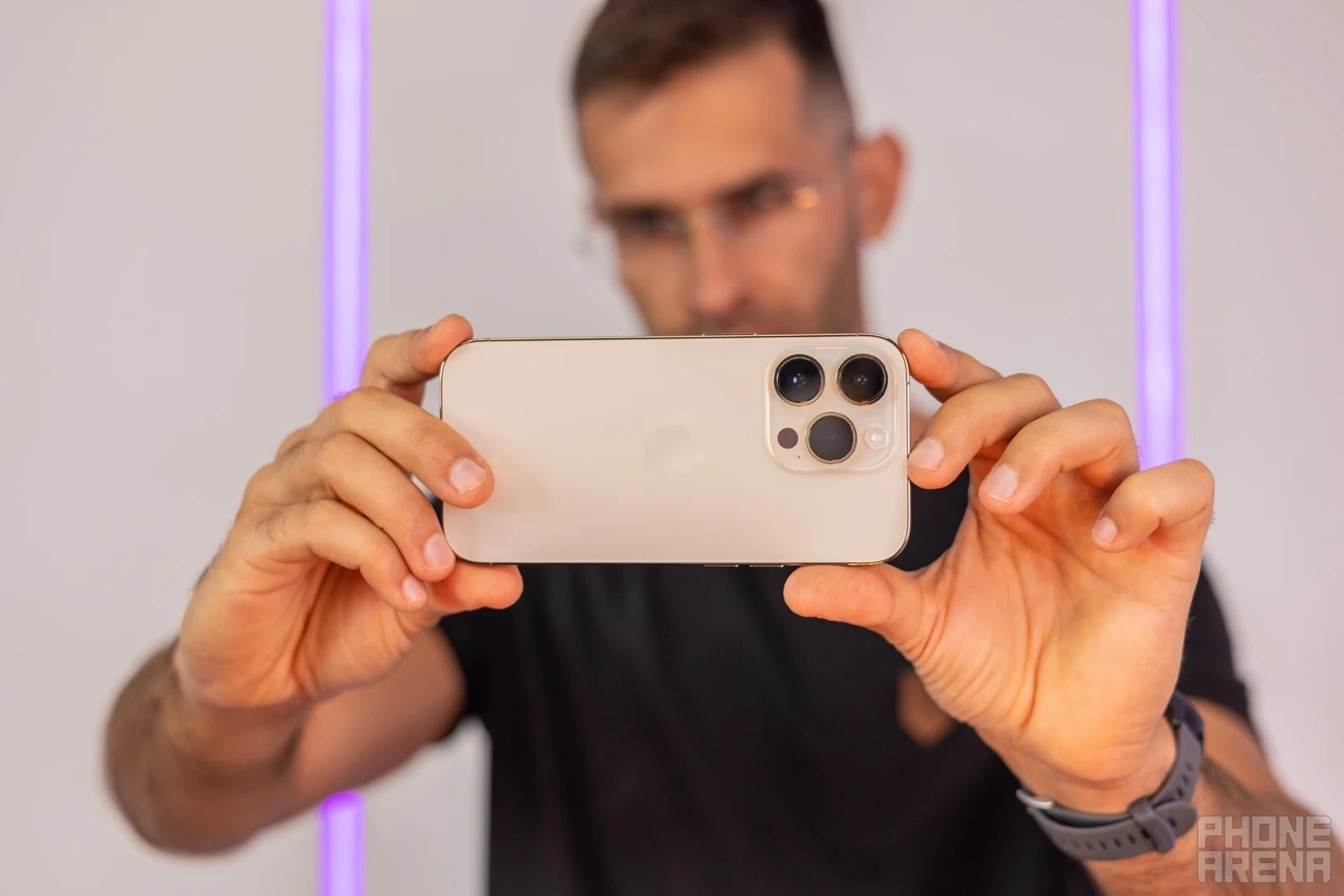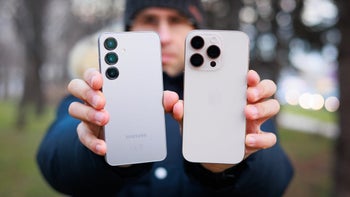iPhone 14 camera: everything you need to know
We may earn a commission if you make a purchase from the links on this page.

Over the past couple of years, Apple has put an extra emphasis on upgrading its iPhone cameras. It all started with the iPhone 14 Pro, which (finally) came with a higher-resolution sensor than the 12 MP that Apple had used for years. The iPhone 15 series of 2024 took that upgrade and ran further with it, adding more refinement, especially in the iPhone 15 Pro Max model.
So, back to where the upgrade cycle began — in 2022, we ran our extensive tests of the iPhone 14 series, and the then new 48MP main sensor of the Pro models really impressed us. Fast-forward to today, in 2024, we ran the good old iPhone 14 Pro through our new PhoneArena Camera Benchmark test, and it still holds up!
Here is how it fared:
iPhone 14 camera upgrades: what's new
The star of the show here is the 48 MP sensor of the iPhone 14 Pro camera. This enables a few things:
- By default, the camera bins pixels together in groups of 4, resulting in 12 MP photos with improved lighting
- You can use ProRAW to capture full 48 MP photos
- There is a new zoom step between wide 1x and telephoto 3x (by cropping into the new larger sensor for a 2x zoom)
iPhone 14 camera specs
That said, here are the raw specs of the iPhone 14 series phones. All the main cameras here come with sensor shift stabilization:
| Phone model | Main camera | Ultra-wide camera | Telephoto zoom |
|---|---|---|---|
| iPhone 14 | 12 MP, F1.5, 26 mm equivalent | 12 MP, F2.4, 13 mm equivalent | None |
| iPhone 14 Plus | 12 MP, F1.5, 26 mm equivalent | 12 MP, F2.4, 13 mm equivalent | None |
| iPhone 14 Pro | 48 MP, F1.8, 24 mm equivalent | 12 MP, F2.2, 13 mm equivalent | 12 MP, F2.8, 77 mm equivalent |
| iPhone 14 Pro Max | 48 MP, F1.8, 24 mm equivalent | 12 MP, F2.2, 13 mm equivalent | 12 MP, F2.8, 77 mm equivalent |
We'd like to point out that, while the iPhone 15 Pro and iPhone 15 Pro Max have slightly different camera modules, the ones on the iPhone 14 Pro and iPhone 14 Pro Max are the same. This is why we are using them interchangeably throughout this article. iPhone 16 reports are coming in and rumor has it that the iPhone 16 Pro will get the tetraprism zoom lens, and be closer or identical to the iPhone 16 Pro Max.
So, with that 48 MP sensor, if you leave the iPhone 14 Pro on auto, it will intelligently choose when to go for pixel binning and when to aim for higher-res photos. Once you enable ProRAW, you will have the option to force 48 MP, and the phone will still employ machine learning and post-processing to deliver a huge, high-res picture.
The 2x step is a crop from the 48 MP sensor and Apple calls it "optical-quality zoom" (yes, bombastic naming hasn't gone out of style, and other companies now use the same wording). It is accessible for normal shooting modes but also Portrait mode, allowing you more flexibility when setting up a shot. If you've got no room to lean back and use that 3x telephoto, you can still snap a cool portrait at the 2x "optical-quality" step.
The ultra-wide camera also got a bigger sensor underneath, though it's still a 12 MP resolution. This, an aperture of F2.2, and the new Photonic Engine (an upgrade to Apple's Deep Fusion, the image-processing algorithm) ensured a noticeably better low-light performance than iPhones 13 and below. The wide and telephoto cameras also seem to produce much better photos in low-light conditions.
Here are some sample images from the iPhone 14 Pro Max:
As for the regular iPhone 14, it retains the old 12 MP camera system that looks to be the same as on the iPhone 13... or very slightly improved with the help of the new Photonic Engine (Deep Fusion upgrade) and a slightly wider F1.5 aperture (vs F1.6 on the iPhone 13).
Here are a few sample images from the regular iPhone 14:
We'd like to note that in 2023, the Pro iPhone 15 and iPhone 15 Plus came with an upgraded 48 MP main camera. It is not the same sensor as on the iPhone 14 Pro, but it's definitely an upgrade still.
When it comes to video, the Action Mode was introduced with the iPhone 14. This provides extreme stabilization for super-smooth footage, which honestly looks like some sort of dark magic. A short sample of how well it does can be spotted in the video below — keep in mind, I am on a skateboard while recording (timestamped, 4:19):


The Cinematic Mode was upgraded too — it can record at 4K, and you have a choice between 24 FPS and 30 FPS (it was locked to 1080p at 30 FPS on iPhone 13). Also, editing Cinematic Mode videos in post allows you to re-focus and blend 24 FPS and 30 FPS videos in the same project, with the end result taking the lower frame rate.
The iPhone 14 Pro, again, took things a step further as it allowed you to record video in Apple ProRes — basically an industry-leading codec. However, keep in mind that the cheapest 128 GB variant of the 14 Pro can only record ProRes at 1080p. If you want 4K, you need to spring for at least a 256 GB model. The same goes for the newest iPhone 15 Pro.
How many cameras does the iPhone 14 have?
As before, Apple has implemented the tried and true formula of two cameras on the non-Pro models, triple cameras with an extra LiDAR on the Pro models.
So, the iPhone 14 and iPhone 14 Plus have two cameras — main wide-angle and ultra-wide-angle. The iPhone 14 Pro and iPhone 14 Pro Max have the main wide-angle, ultra-wide-angle and a 3x telephoto cameras for portraits and optical zoom.
iPhone 14 camera upgrades in detail
48 megapixel sensor

Image credit - PhoneArena
For years, Apple had stuck to a 12 MP main camera sensor on its iPhones. The sensor itself did grow in size, which would allow all of those pixels to be slightly larger with each upgrade, culminating with the iPhone 13 series' camera, which is quite good at collecting light and capturing vibrant colors.
However, the competition has been springing ahead with bigger and more pixel-dense sensors, so Apple caved. The iPhone 14 Pro and Pro Max came with a new, 48 MP sensor, which can take sharper photos, or bin pixels together for brighter photos.
Better Night Mode
Binning pixels is the first step. Apple also upgraded its Deep Fusion imaging pipeline to what it now calls the Photonic Engine. It basically does the same things Google's HDR+ does — it shoots at multiple exposures, gets the best-exposed details from each part of the scene, and combines everything in one sharp, well-lit photo.
Selfie camera with autofocus
The selfie cameras on both the non-Pro and Pro models now has autofocusing and a wider aperture of F1.9. A wide aperture allows for more light to come in, but it also introduces more blur in objects that are out of focus, which in turn demands for an autofocus. In comparison, the iPhone 13 series have fixed-focus front cameras with a narrower aperture of F2.2.
Action Mode video
Super-stabilized for very smooth action shots. It's perfect when trying to capture while in the middle of high-octane action. Skating, running, following an athlete or shooting an action scene for your aspiring amateur movie — it will work for it all. Just... maybe consider a rugged case and watch your step!
Cinematic Mode gets 4K and 24 FPS
Previously locked to 1080p at 30 FPS, now you get more options. Also, you will have more control over changing focus points when editing the footage and you will be able to mix 24 FPS and 30 FPS clips in the same project. Available on both iPhone 14 and iPhone 14 Pro.
Adaptive LED flash
Adjusts flash strength depending on focal length — can get 2x brighter for telephoto shots.
What's the future of iPhone cameras?
With the iPhone 16 series coming up near the end of this year, we already have some leaks and rumors about what's next. Reportedly, Apple will look to further combat the lens flares that iPhones are notorious for with a special new coating on the iPhone 16 Pro lenses. Others say that there will be a new hardware two-step shutter button — press lightly to focus, push in to shoot. We kind of think that, if this happens to be true, it would be a modified Action Button — Apple isn't a huge fan of adding hardware controls willy-nilly.
Multiple reports have said that the iPhone 16 Pro will get the 5x tetraprism lens, currently exclusive to the iPhone 15 Pro Max. But what about the 16 Pro Max? Well, some suggest that it will get a super zoom lens with an equivalent focal length of 300 mm — or something like 12.5x zoom compared to the main camera.
Lastly, analysts don't seem to believe that the front FaceTime camera will be changed this year. Instead, we might see a jump from 12 MP to 24 MP next year — with the iPhone 17 series, still far off into the future.
Multiple reports have said that the iPhone 16 Pro will get the 5x tetraprism lens, currently exclusive to the iPhone 15 Pro Max. But what about the 16 Pro Max? Well, some suggest that it will get a super zoom lens with an equivalent focal length of 300 mm — or something like 12.5x zoom compared to the main camera.
Lastly, analysts don't seem to believe that the front FaceTime camera will be changed this year. Instead, we might see a jump from 12 MP to 24 MP next year — with the iPhone 17 series, still far off into the future.













Things that are NOT allowed: